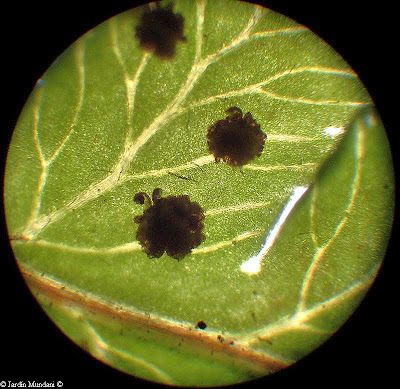The Dryopteris oligodonta, called "Helecho Macho" by the Canarian people, is the only endemic aspidiaceae of the Canary Islands, but has also been described on the island of Santo Antao of Cape Verde Archipelago. Its botanical name is formed by the combination of four Greek words: Dryos-pteris = oak-fern, ie fern that lives under the oaks or oak fern, the haunt of the species of the genus Dryopteris by living in the shadow cool and moist leaved tree (Lauraceae and Ericaceae in the Macaronesian Islands) and oligo-odonthos = few-teeth, referring to the little dentate pinnae of the fern.
Dryopteris oligodonta in the beautiful woods of laurel from the path of the Vueltas de Taganana in the Anaga Rural Park located north of the island of Tenerife.
Vigorous Dryopteris oligodonta in the shade of a Til or Garoe, Ocotea foetens in the paradisiac Bosque de los Tiles of Isla de la Palma.
"Helecho Macho" with roots deep shadow barefoot to a Vinatigo, Persea indica, in the Bosque de los Tiles (Double click on the photo to enlarge)
Habitat of Dryopteris oligodonta in Anaga Rural Park in Tenerife.
New fronds of another Dryopteris oligodonta in the same habitat as above, growing on a rich soil composed of leaves and broken branches of shrubs that provide shade.
Detail of surface of several pinnae of a new frond with rounded teeth in small number that give the name. Really look like a denture. Seeing this picture we can understand the reason why Rodolfo Emilio Giuseppe Pichi Sermolli, Florentine botanist who described it in 1951, gave the name "oligodonta."
Underside of the pinnae with immature sori covered by the typical reniform indusium of the genus Dryopteris. (Double click on the picture to enlarge)
Mature sori initiating the dispersal of spores. It looks good detail of the teeth of the pinnae and green lattice drawn by each pinnules nerves or tooth.
Sori with the sporangia completely unfolded after the dispersal of spores. The three photos above with the different stages of the sori are made in mid-May, which means that this fern is spreading spores throughout the year.
Sori of Dryopteris oligodonta viewed under a microscope at 10 magnification. In the lower sore a sporangium is already deployed and down the underside of the midrib of the pinna with glandular trichomes.
Detail of the glandular trichomes of the pinna midrib above viewed under a microscope at 40 magnification. (Double click on the photo to enlarge)
Palea of lower side of a pinna of Dryopteris oligodonta, consisting of transparent housings dry and empty cells.
And finally in this photo you can see the stalks of the fronds covered with large brown paleae as a shelter.
In the Isla de la Gomera found a hybrid of Dryopteris guanchica and Dryopteris oligodonta who was given the name of Dryopteris x cedroensis.













No comments:
Post a Comment